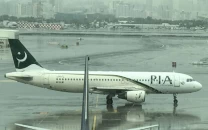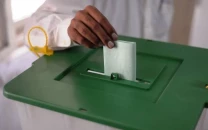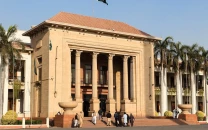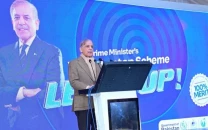Outsourced assessment: Government initiates evaluation of literacy projects
Qualitative and quantitative appraisal will take nine months to complete

Qualitative and quantitative appraisal will take nine months to complete
According to documents available with The Express Tribune, an amount of Rs5.082 million will be spent for the assessment titled ‘Third-Party Evaluation of Literacy Interventions’ that will evaluate the initiatives of the Literacy & Non-Formal Basic Education (L&NFBE) Department.
A total of 1,008 non-formal educational institutions (NFEIs) – 28 from each district of the province – will be evaluated. The documents project that the evaluation will take nine months to complete and is expected to end by September 2017.
Rates increase, but universal literacy remains a distant dream
The evaluation process will be carried out in the following categories of non-formal schools across Punjab: non-formal education feeder schools (NFEFS), adult literacy centres (ALCs) and non-formal basic education schools (NFBES).
The survey will be qualitative and quantitative, meaning that it will check the numbers of buildings, facilities and centres along with testing the students and checking the curriculum.
The documents set the parameters as testing the very basic knowledge of literacy: reading, writing and arithmetic while also checking the enrolment, availability of staff and other facilities at the centres.
The L&NFBE department is tasked with formulating policies and projects for access to quality literacy and non-formal education to illiterate out-of-school population. The department is mandated with increasing the literacy rate through provision of non-formal education and to decrease gender and regional disparity in literacy rate.
Empowering women through BISP
The department is tasked with taking action for the poorest, rural and illiterate female population through specially designed skills, alternative learning systems and setting up measureable standards. It is also assigned the role of developing curricula and books as well as assessment, equivalency and accreditation systems.
According to Pakistan Education Atlas 2016, adult literacy is defined as the percentage of the population above the age of 15 which can, with understanding, read and write a short, simple statement on everyday life and perform basic arithmetic operations.
The report estimates that in Pakistan 57% of the population in Pakistan is literate, out of which 68% is male while 45% is female.
For Punjab, the Pakistan Education Atlas 2016 states, 60% of the population is estimated to be literate with 69% of them male and 51% female.
According to the Global Monitoring Report of 2015, Pakistan’s adult literacy rate is 58%. Target 4.6 of the SDG-4 deals with literacy which states: “By 2030, ensure that all youth and a substantial proportion of adults, both men and women, achieve literacy and numeracy”.
Vision 2025 of the Planning Commission of Pakistan has set the target to achieve universal primary education and literacy rate of 90% by the year 2025.
Published in The Express Tribune, February 13th, 2017.



















COMMENTS
Comments are moderated and generally will be posted if they are on-topic and not abusive.
For more information, please see our Comments FAQ